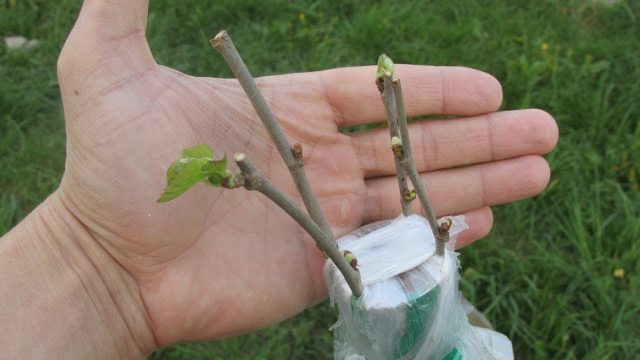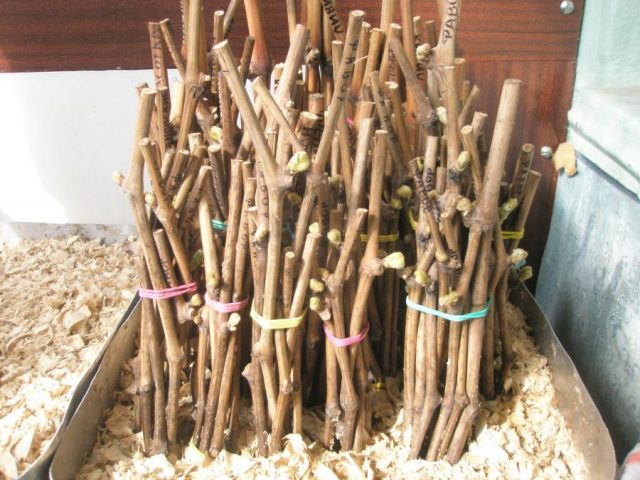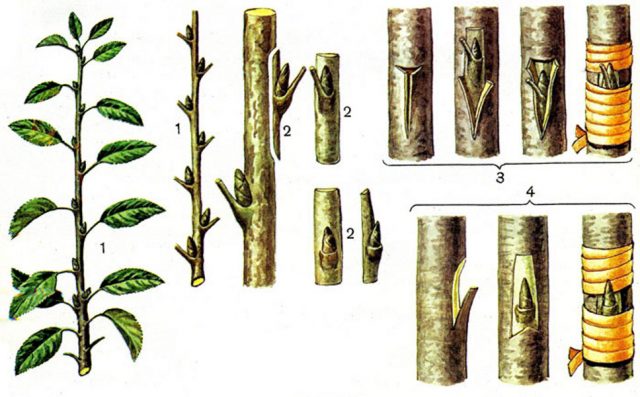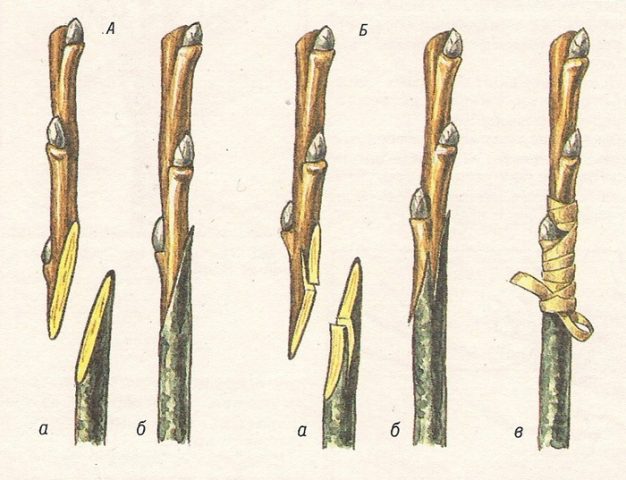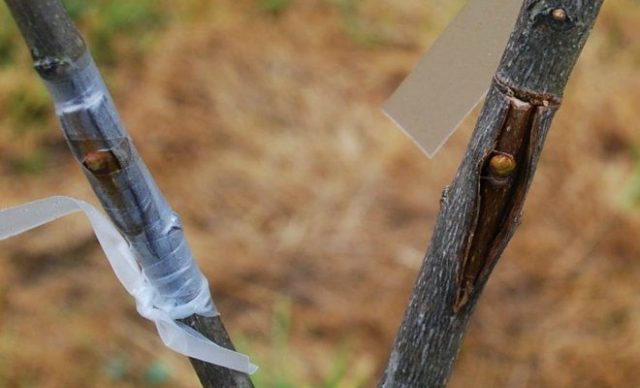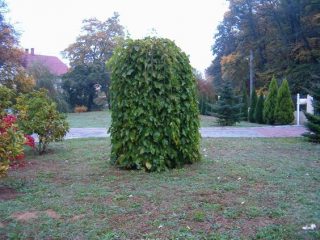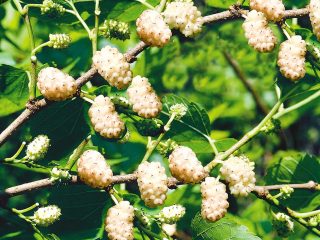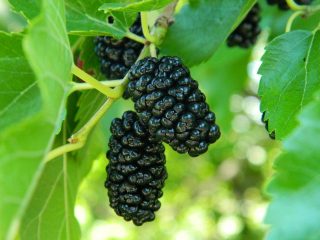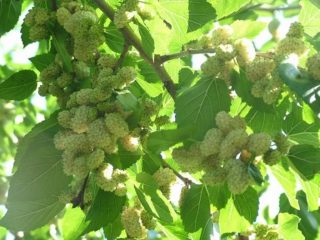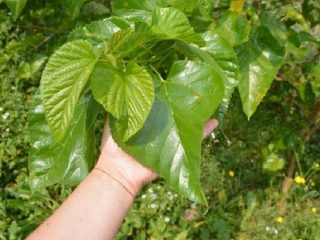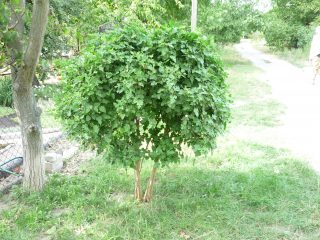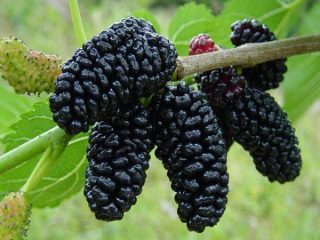Content
Mulberry (mulberry) is a fairly common fruit tree, often grown in the southern regions of Russia. It produces tasty and healthy fruits with a number of medicinal properties, but requires good care. The planted tree does not always meet the gardener's expectations, often the berries turn out to be small, tasteless, or the plant grows into the wild. The easiest way out in this situation is to plant a mulberry tree.
Pros and cons of mulberry propagation by grafting
Grafting is a special operation that allows you to change the characteristics of a plant due to biological fusion with it of another variety or species. It is widely used for many fruit trees. Grafting apple trees, pears, plums, cherries and other crops. This technique allows:
- Rapidly propagate the desired variety without planting seedlings.
- To increase the number of cultivated varieties without increasing the number of plantings.
- Change the characteristics of the plant, its winter hardiness, overall dimensions, the ripening time of the crop.
- Change the palatability of the fruit.
- Save your favorite species or variety in the event of the death of the tree.
Grafting mulberries in spring can shorten the time to get the first harvest by several years. This is very important when the crop is first grown. Thanks to grafting, you can quickly assess the result obtained and determine whether it is worth working with this variety in the future.
The disadvantages of vaccination include its relative complexity, especially for beginners. However, this problem is solved by independent study of the theoretical part and practical work, preferably under the guidance of an experienced mentor, especially if it is done for the first time.
What mulberries are grafted into
The mulberry tree has a significant drawback: it is usually grafted only within the genus. Therefore, planting mulberries, for example, on a plum will not work. Various types of mulberry are grafted and grafted together, for example, white grafts are grafted onto black, black onto red, etc. Grafting of a cultivated variety on a wild mulberry tree is also common. Other plants are not used as rootstock. Grafting of mulberries on plums, apricots, peaches and other fruit crops is unlikely to succeed; such attempts were made by experimental gardeners repeatedly and invariably ended in failure.
What can be grafted on mulberries
In the vast majority of cases, only another mulberry tree can be grafted onto a mulberry tree. Mulberry is an independent genus of plants, uniting 17 species of deciduous trees. They can be grafted onto each other. As a rule, other crops are not grafted on mulberries. However, experienced gardeners sometimes manage to graft figs on mulberries, and also, paradoxically, grapes. To do this, they use a rather original method. A hole is drilled in a mulberry tree so that a vine can be passed through it. If accretion occurs over time, then the maternal shoot of the grapes is cut off, and the vine continues to grow on a silk rootstock.
Preparing for mulberry grafting
Preparation for grafting a mulberry tree begins in the fall. It was at this time that cuttings were cut and harvested.A suitable period for this is the period of time from the end of leaf fall to the onset of the first frost. For cutting cuttings, annual mulberry shoots growing from the sunny side are used. The length of the cuttings should be 30-40 cm, the thickness should be 5-7 mm.
After harvesting, the cuttings are tied into bundles and stored in a basement or cellar. Store them in an upright position, in the direction of natural growth, by placing a cut in a moist substrate of sawdust or sand. The optimum temperature for this is + 2 ° C.
Silk cuttings can also be stored outdoors. An ordinary hole in the ground is suitable for this. It is usually done on the north side of the house to avoid sun-induced temperature fluctuations. A layer of wet sawdust is poured onto the bottom, then the cuttings are laid out, falling asleep on top with the same moistened material. In this form, the pit is left for an hour so that the sawdust has time to cool. After that, a layer of dry sawdust is poured on top and covered with plastic wrap.
If the harvesting time is missed in the fall, you can start cutting cuttings in late winter or early spring, at this time the frosts have already stopped, but the buds on the shoots are still dormant. Cuttings cut at this time can be stored in the refrigerator on the top shelf. To do this, they are wrapped in a clean, damp cloth and then placed in a plastic bag.
Before inoculation, you need to prepare the necessary tools and materials. To carry out the work you will need:
- copulating knife;
- budding knife;
- pruning shears or garden shears;
- polyethylene tape;
- fixing material;
- garden var.
All cutting edges must be properly sharpened. The sharper they are, the smoother the cut will be, the faster the wounds will heal and the tree will heal.
Before carrying out work, the instrument must be disinfected so as not to infect the wound.
How to vaccinate a mulberry tree
For grafting mulberry trees in spring, you can use all the same methods as for other fruit trees. Most often, mulberries are grafted with the following methods:
- budding;
- copulation;
- into cleavage;
- for the bark.
Budding and copulation are the most common methods of grafting mulberries. The rest of the methods are used less frequently.
How to plant mulberries in spring
You can plant a mulberry tree in the spring, about 1-2 weeks before flowering. To do this, it is recommended to use the following methods:
- budding in the butt;
- budding in a T-shaped incision;
- simple copulation;
- improved copulation.
Budgeting in the application is a fairly simple way. Its essence lies in the fact that a cutout of the so-called shield is made on the stock - a part of the bark. In place of the cutout, a shield with a bud of the same shape and size, taken from the middle part of the cutting, is placed. After combining the cambium layers, the flap is fixed with a special tape.
Budding into a T-shaped incision is performed as follows. The bark of the stock at the site of the future grafting is incised in the form of a capital T. The layers of the bark are folded back, and a scion shield with a bud is inserted behind it. After that, the flap is fixed with tape, while the kidney remains open.
Both methods of budding are shown in the figure below.
Copulation is another common way to plant mulberries in spring. This method is used when the thickness of the rootstock and the scion cuttings are the same. The rootstock shoot and the bottom of the cutting are cut obliquely, so that the cut length is approximately 3 times its diameter. After that, the rootstock and the scion are combined, achieving the maximum coincidence of the cambium layers. The vaccination site is fixed with a special tape.
The survival rate can be increased with the help of improved copulation. In this case, the oblique cut of the cutting and stock is not made straight, but zigzag. This allows for a more rigid fixation of the cutting at the grafting site, and also increases the contact area of the cambium on the rootstock and scion.
The figure shows both copulation methods:
You can find out if the vaccination was successful in about 10-14 days. The established shoot will release leaves and move confidently into growth.
How to plant mulberries in summer
In addition to the spring period, mulberries can be grafted in the summer, from the end of July to the beginning of the 3rd decade of August. To do this, use the method of budding the so-called sleeping eye. Summer mulberry grafting in this way does not differ from the usual spring budding... As a scion, a shield with a dormant bud is used, which is taken from the annual shoots of the desired mulberry variety. The survival rate is determined after 1.5-2 weeks, if the kidney has not turned black and retained a fresh look, then the vaccination was successful. It will start to grow only next spring.
How to prepare a mulberry vaccination for winter
The vaccination site is quite vulnerable. Until complete fusion occurs, the cuttings may shift due to wind, precipitation or other reasons. Therefore, for the first few months, the fixing tape is not removed, but only loosened so as not to disrupt the sap flow. It is completely removed only after the tree has overwintered. You can also increase the survival rate quantitatively by making several grafts in different places of the tree.
Winter is a good time to graft wild mulberry seedlings with cultivated cuttings if they are growing in a greenhouse or indoors. Often this vaccination is called table vaccination, since it is performed in a comfortable environment. It is recommended to conduct it from the end of December to the beginning of March. At home, you can make very neat clean cuts, so the survival rate for such vaccinations is invariably high.
How to find out if a mulberry tree is grafted or not
The result of the vaccination can be assessed visually after 10-15 days. If the grafting is successful, the cutting will remain healthy and the buds will start to grow. To improve survival, all shoots must be cut off below the grafting site so that the tree does not waste energy on their growth. The fixing tape must be left, it can be loosened no earlier than 3 months after the vaccination.
The spring grafting should be considered unsuccessful if, 2 weeks after the procedure, the flap with the bud or the stalk did not sprout, it turned black and dried out. However, do not despair, since budding with a sleeping eye can be repeated in the summer. In any case, the result, even if unfortunate, is useful in terms of gaining experience.
Experienced gardening tips
Here are some tips to give budding growers before grafting mulberry trees. Following them will allow you to avoid many mistakes and increase the number of positive results.
- It must be remembered that the mulberry tree is a dioecious plant. Having grafted a stalk from a female on a male tree, you can get a harvest already for 4-5 years.
- If a mulberry is grafted onto an adult tree, it will begin to bear fruit 2-3 years earlier.
- Grafting weeping or spherical varieties on a low-growing bole can significantly reduce the height of an adult tree, while making it easier to harvest and work with the crown.
- Several varieties of mulberry can be grafted onto one tree without any problems, while obtaining fruits of different colors.
- In the summer, you can use a bud from a growth shoot for budding.
- They don't get vaccinated on a rainy day.
- The best time to get vaccinated is early morning or evening.
- The better the instrument, the better the survival rate.
- Do not touch the slices with your hands.
Conclusion
It is not difficult to plant a mulberry tree if all work is carried out on time and with proper quality. You can avoid common mistakes if you carry out this work under the guidance of an experienced gardener.A mulberry tree can grow up to 200 years old, so with the right approach, you can grow a real mulberry assortment on one tree.
